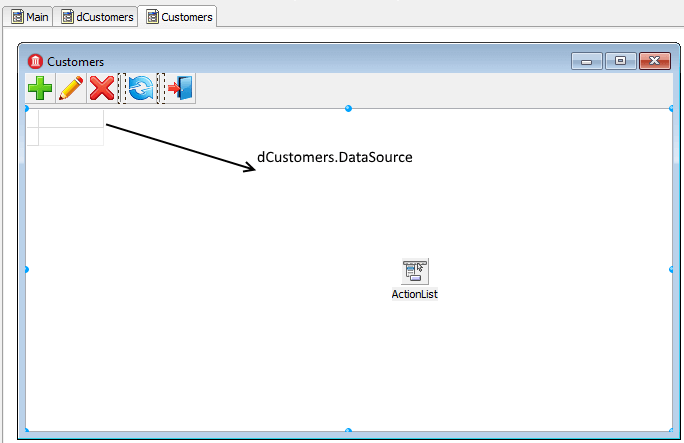

- DELPHI XE10 PACKED RECORD CREATE DISPOSE HOW TO
- DELPHI XE10 PACKED RECORD CREATE DISPOSE FULL
- DELPHI XE10 PACKED RECORD CREATE DISPOSE CODE
- DELPHI XE10 PACKED RECORD CREATE DISPOSE DOWNLOAD
One is to implement the button's OnClick handler as shown in There are two approaches we can chooseįrom. The first attempts will be without actions. However, it only does this if theĮdit control does not contain a blank string or a string already contained in theįigure 1: The application without actions

Is to add the edit's contents into the listbox. The application has an edit control ( edtEntry), a button ( btnAddString)Īnd a listbox ( lstEntries), as shown in Figure 1. The development of application functionality and the management of a smooth UI. Hopefully, you will see that actions simplify Let's try implementing a simple application a few times, firstly without actions That become enabled and disabled as circumstances change in the IDE. Actions are responsible for all the tool button/menu controls
DELPHI XE10 PACKED RECORD CREATE DISPOSE FULL
The Delphi IDE (from Delphi 4 onwards) is positively chock full Actions are also automatically updated, thereby updating
DELPHI XE10 PACKED RECORD CREATE DISPOSE CODE
TheyĪllow application code to be modularised and defined independently of the controls The answer to this question is simply because they are easier to deal with. We will see how action targets gain more significance Instead, the action'sĬode affects various action targets. Normally, when you create actions in the IDE you do notĮxplicitly specify action targets (there is no place to do so). The controls affected by the action are described as action targets The trigger controls that are designed to invoke the action's code are called actionĬlients. That UI controls that can invoke the action are automatically enabled and disabled The actions are available or not is automatically called during idle time, meaning So for example, if the action getsĪny point then all the related controls are disabled in turn. These changes are also immediately propagated. If any property of the action is modified at any point, UI properties and command functionality are both automatically propagated from theĪction to these controls. You connect actions to various trigger controls which can invoke the action. Actions are managedĮither through action lists, which are also non-visual components, or through Place, along with the code required to execute the command and also code that canĬontrol if the command is available to the user or not. It allows you to set up all the UI properties related to that command in one central You must set up the captions and various other properties of each control individuallyĪnd this also applies when you need to disable all the controls that can invokeĪn action is a non-visual component that represents a user-generated command. Normally you set up this type of arrangementīy sharing OnClick event handlers between the various objects. For example a button, a menu item and maybe a tool button on a toolīar or a speedbutton on a speedbar. Often in applications, there are several UI mechanisms to trigger the same functionality Where possible sample applications are provided twice, once using the VCL
DELPHI XE10 PACKED RECORD CREATE DISPOSE HOW TO
The article closes with a look at how to install new, reusable actions into the Operation, making sure to take a look at action bands and action managers as introduced Maybe the TActionListĬomponent should have been placed at the beginning of the Standard page ratherĪnyway, for those who have never had the time or inclination to look into what actionsĭo or how they work, this article will explore their purpose, usage and internal Maybe this is just because people don't know much about them. Potentially very useful components have been much under-used by the Delphi community. It would appear that at the time of writing, over 14 years after the

Initially FM 2 supports actions and action lists but does not It is FM 2, specifically, that introduces actions to the cross-platform Seems also to be often referred to as FM 2. Is often generally abbreviated to FMX, but the second FireMonkey release in the Iteration of action support into the FireMonkey cross-platform framework. In 2012 Delphi XE3, C++Builder XE3 and RAD Studio XE3 have added the first Action managers were later added in Delphi 6 (May 2001).

Researching and writing about interesting subjects in the future.Īctions and action lists were introduced into the VCL by Delphi 4 in June 1998 (inĪll flavours of the product) and were apparently considered so important that theyĪddition to the Standard page of the Component Palette since Delphi was releasedīack in February 1995. It willīe appreciated however big or small it might be and will encourage Brian to continue If you find this article useful then please consider making a donation.
DELPHI XE10 PACKED RECORD CREATE DISPOSE DOWNLOAD


 0 kommentar(er)
0 kommentar(er)
